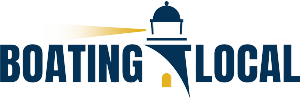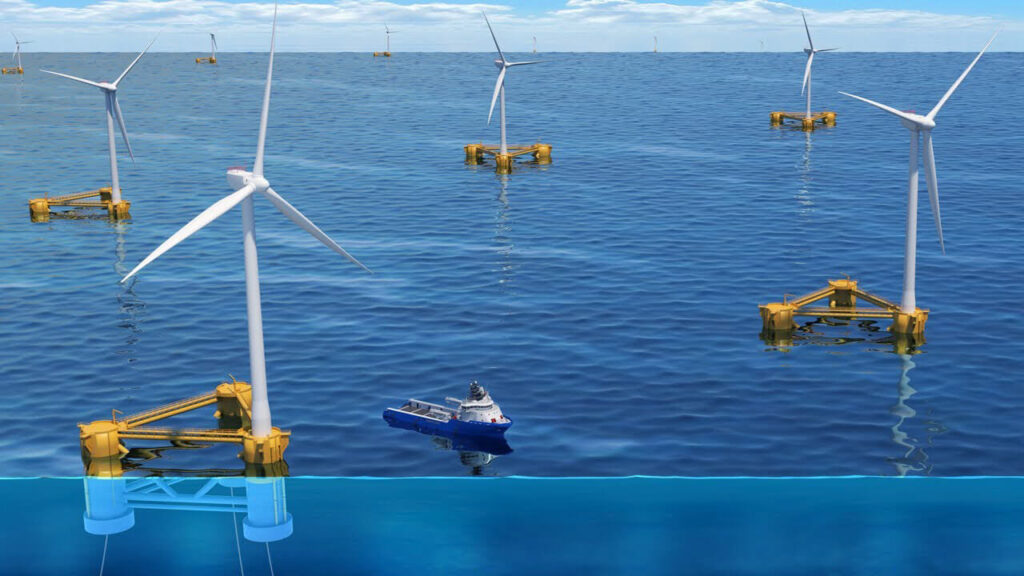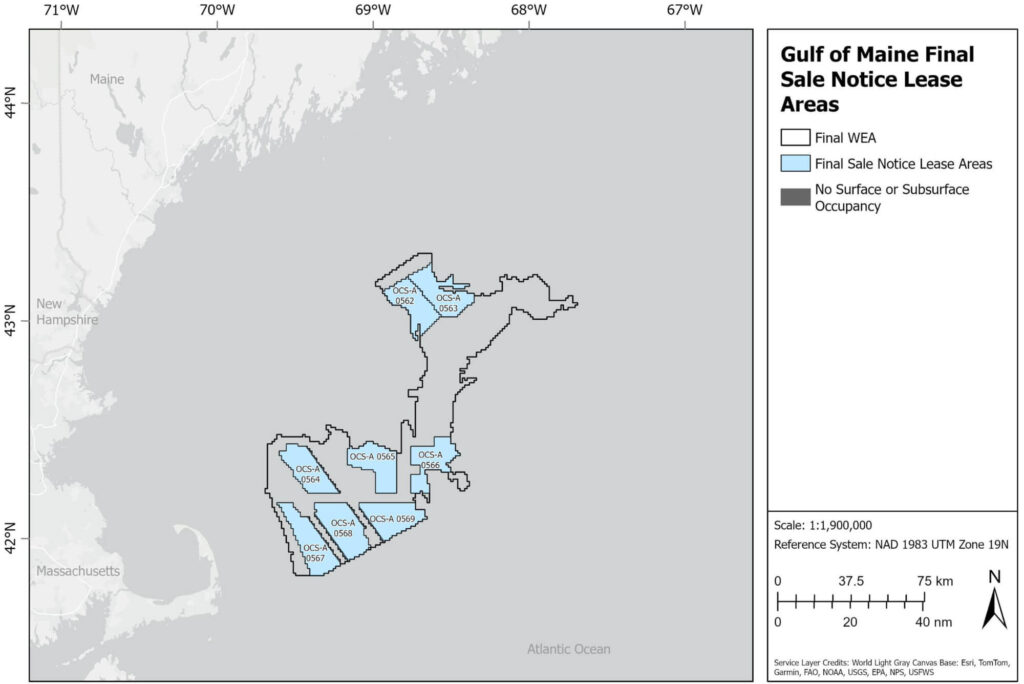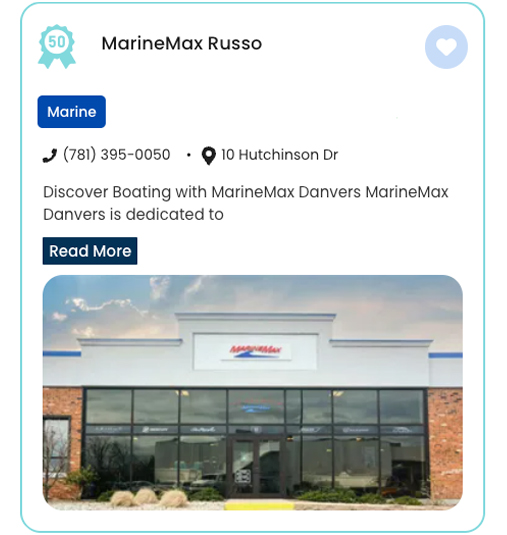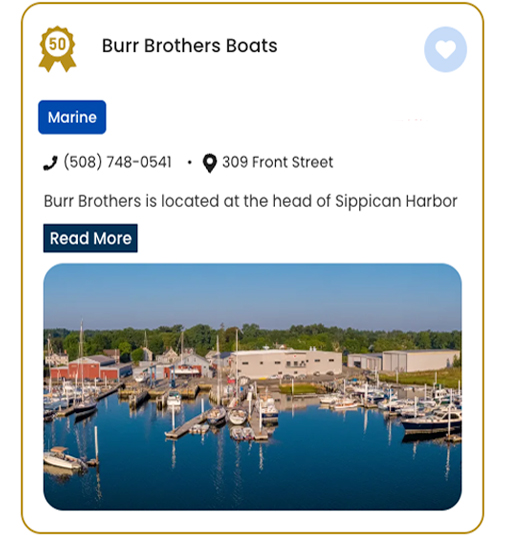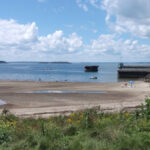
New Boat Launch Approved in Harpswell, Maine
November 7, 2024
Garmin Fusion Apollo Marine Speakers and Subwoofer
November 8, 2024
Feds Lease 4 Sites in Gulf of Maine for Wind-Energy Development
On October 29, 2024, the federal government announced the first commercial sale of leases designated for floating offshore wind-energy development on the Atlantic Coast. Conducted by the Bureau of Ocean Energy Management (BOEM), the sale allows two companies to submit plans for developing floating “wind farms” in four lease sites in the Gulf of Maine. The leases generated over $21.9 million in winning bids. Collectively, the leased areas have the potential to power more than 2.3 million homes if development comes to fruition.
Avangrid Renewables, LLC won Lease OCS-564 at $4,928,250, which consists of 98,565 acres, and Lease OCS-568 at $6,244,850, which consists of 124,897 acres. Both lease areas are approximately 29.5 nautical miles (nm) from Massachusetts.
Invenergy NE Offshore Wind, LLC won Lease OCS-562 at $4,892,700, which consists of 97,854 acres and is approximately 46.2 nm from Maine, and Lease OCS-567 at $5,889,000, which consists of 117,780 acres, is approximately 21.6 nautical miles (nm) from Massachusetts.
According to a BOEM press release, the sale also resulted in over $5.4 million total bidding credits, which represent binding commitments by the energy companies to invest over $2.7 million in workforce training and domestic supply chain development, and an additional $2.7 million for fisheries compensatory mitigation to commercial fisheries affected by any development.
In addition, lease stipulations require that the lessees make “every reasonable effort to enter into a project labor agreement covering the construction stage of any project for the lease areas; develop communication plans for engagement with [Native American] Tribes, agencies, and fisheries; and provide semi-annual reports on engagement activities with Tribes and communities.”
The lease awards do not authorize the construction or operation of any offshore wind facilities. Rather, they provide the right to submit a project plan for BOEM’s review. BOEM will then develop an Environmental Impact Statement (EIS) to analyze the specific impacts of any project proposals before making decisions on whether to approve a proposed construction and operations plan. The EIS will be prepared in consultation with different user groups and appropriate government agencies, and informed by input from stakeholders, ocean users, and the public.
REGIONAL NEWS

FEATURED
